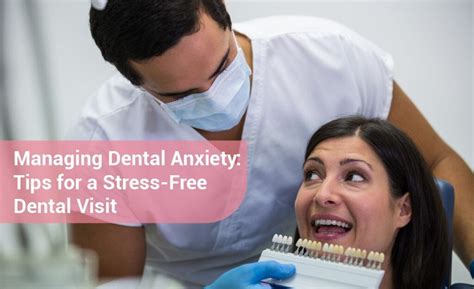Imagine a world where dental visits are no longer associated with fear and discomfort. Picture yourself sitting in a dental chair, feeling relaxed and at ease, as a highly skilled professional works diligently to improve your oral health. This is not just a dream, but a reality thanks to the advancements in pain-free dentistry.
Gone are the days of cringing at the sight of a needle or experiencing excruciating pain during dental procedures. With the innovative techniques and state-of-the-art technology available today, dentists are able to provide a comfortable and virtually painless experience.
One of the key components of pain-free dentistry is the use of alternative methods to traditional anesthesia. Instead of relying solely on needles and numbing agents, dentists now utilize advanced techniques that minimize discomfort and maximize patient satisfaction. Through the use of targeted anesthesia, patients can experience pain relief while avoiding the sensation of being "numb" for hours after the procedure.
In addition to advanced anesthesia techniques, dentists also focus on creating a soothing and calming environment for their patients. From the moment you step into the dental office, you are greeted by friendly staff and a welcoming ambiance. The dental chairs are designed for optimal comfort, with plush cushions and adjustable features that cater to your individual needs. This attention to detail ensures that your experience is not only pain-free but also enjoyable.
Whether you require a routine cleaning or more complex dental work, pain-free dentistry offers a solution that prioritizes your comfort and well-being. So why tolerate the anxiety and pain of traditional dental visits when there is a better alternative available? Embrace the future of dental care and discover a world where pain and discomfort are a thing of the past.
The Advancements in Dentistry: From Numbing Agents to Needle-Free Methods

In the realm of dentistry, the evolution of anesthesia techniques has provided patients with increased comfort and reduced anxiety during dental procedures. This article explores the progression of dental anesthesia from the traditional application of numbing gels to the advent of needle-free techniques.
The Early Days: In the early stages of dental anesthesia, dentists relied primarily on numbing gels and creams to alleviate pain during treatments. While these topical agents provided some level of comfort, their effectiveness was limited, particularly for more invasive procedures.
Enter Local Anesthetics: The introduction of local anesthetics marked a significant milestone in dental anesthesia. Dentists began incorporating injectable substances, commonly known as "novocaine" or lidocaine, to numb specific areas of the mouth and gums. These powerful agents allowed for more extensive dental work with minimal discomfort for patients.
Revolutionary Innovations: In recent years, dental technology has brought forth revolutionary needle-free methods of administering anesthesia. These techniques aim to eliminate the fear and pain associated with traditional injections. Devices utilizing techniques such as air-driven syringes and jet anesthesia systems deliver anesthesia without the need for a needle, offering a pain-free experience for patients.
Looking Ahead: As dental professionals continue to prioritize patient comfort, the future of anesthesia in dentistry appears promising. Ongoing research and advancements in technology are aimed at refining needle-free techniques and exploring new avenues of pain management, ensuring that dental procedures are as comfortable as possible.
In conclusion, the evolution of dental anesthesia has witnessed a steady progression from the use of numbing gels to needle-free techniques. Advancements in local anesthetics and the introduction of innovative delivery methods have greatly improved patient experiences. As dentistry continues to push the boundaries of pain management, the dream of pain-free dentistry is becoming a reality.
The Role of Technology in Pain-Free Dentistry: Laser Therapy and Virtual Reality
In the realm of modern dentistry, advancements in technology have paved the way for pain-free procedures and enhanced patient experiences. Two notable innovations in this regard are laser therapy and virtual reality.
Laser therapy:
- In recent years, laser technology has become increasingly prevalent in dentistry.
- With its precise and minimally invasive nature, laser therapy offers a viable alternative to traditional dental techniques.
- By delivering focused beams of light to target specific areas, lasers can effectively treat various dental conditions, such as gum disease, tooth decay, and oral lesions.
- Moreover, laser therapy promotes fast healing and reduces the need for anesthetics, resulting in a pain-free experience for patients.
- Furthermore, the precision of laser technology allows for enhanced accuracy while preserving healthy tissues.
Virtual reality:
- Virtual reality (VR) technology has gained traction in the field of dentistry for its ability to alleviate anxiety and emotional distress among patients.
- Through the use of VR headsets, dental clinics can immerse their patients in virtual environments that distract and relax them during procedures.
- By immersing patients in visually stimulating scenarios, such as tranquil landscapes or engaging activities, virtual reality serves as a form of sedation, reducing the perception of pain and discomfort.
- Moreover, virtual reality can help in creating a positive association with dental visits and foster a sense of control and confidence in patients.
- By leveraging technology to diminish the apprehension associated with dental treatments, virtual reality contributes to pain-free dentistry and improved patient satisfaction.
In conclusion, the integration of laser therapy and virtual reality exemplifies the pivotal role of technology in revolutionizing pain-free dentistry. These advancements not only offer precise and effective treatment options but also address the emotional well-being of patients, enhancing their overall dental experience.
Tips for a Stress-Free Dental Visit: Techniques to Overcome Dental Anxiety and Fear

When it comes to visiting the dentist, for many people, dental anxiety and fear can be a major obstacle. However, there are various techniques that can help individuals overcome these dental-related anxieties and make their dental visits stress-free.
One important strategy is to communicate openly with your dentist or dental hygienist about your fears and anxieties. By expressing your concerns, they can tailor the appointment to suit your needs and provide reassurance throughout the process.
Another helpful technique is deep breathing and relaxation exercises. Before and during the dental appointment, practicing deep breathing techniques can help calm your nerves and reduce anxiety. Additionally, progressive muscle relaxation exercises can be effective in easing tension and promoting a sense of tranquility.
Distraction techniques can also play a significant role in minimizing dental anxiety. Listening to calming music or an audiobook through headphones can divert your attention away from the dental procedure, allowing you to feel more relaxed and at ease.
Furthermore, visualization exercises can be powerful tools in overcoming dental fears. By imagining yourself in a serene and peaceful setting, you can create a positive mental image that helps alleviate anxiety during the dental visit.
Lastly, seeking support from friends or family members can have a positive impact on your dental experience. Having someone accompany you to the appointment can provide emotional support and serve as a calming presence throughout the visit.
In conclusion, by employing these various techniques such as open communication, deep breathing, distraction, visualization, and seeking support, individuals can overcome dental anxiety and ensure a stress-free dental visit. Remember, taking care of your oral health is crucial, and with these strategies in place, you can confidently and comfortably navigate your dental appointments.
FAQ
What is the article about?
The article is about pain-free dentistry and how a dream needle in the gum can provide a solution for those who fear dental procedures.
How does a dream needle work?
A dream needle works by using advanced technology to deliver anesthesia painlessly into the gum, eliminating the discomfort associated with traditional injections.
Can anyone use a dream needle?
Yes, anyone can use a dream needle. It is particularly beneficial for individuals who have a fear of needles or dental procedures.
Are there any side effects of using a dream needle?
No, there are no known side effects of using a dream needle. It is a safe and effective alternative to traditional injections.
Where can I find dentists who use dream needles?
You can find dentists who use dream needles by contacting your local dental association or conducting an online search. Many dental clinics have started incorporating this innovative technology into their practices.
How can I make my dental procedure pain-free?
Pain during dental procedures can be minimized through the use of local anesthesia, dental sedation, and advanced techniques such as the use of a "dream needle" that delivers anesthesia painlessly.
What is a dream needle and how does it work?
A dream needle is a special type of needle used in dentistry that minimizes pain during the injection of anesthesia. It works by using a high-speed, vibratory motion that distracts the nerves in the area and minimizes their ability to transmit pain signals to the brain.




